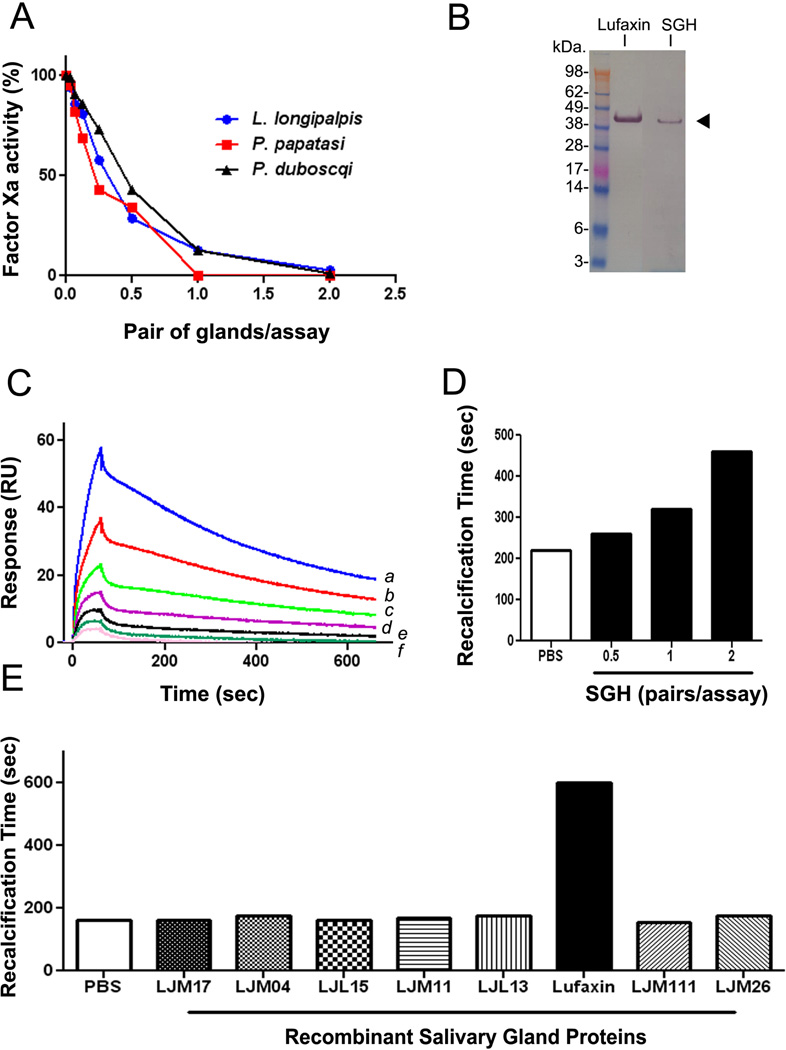Figure 2.
Salivary glands (SGs) from Lutzomyia and Phlebotominae sp. exhibit anti-FXa activity. A, Salivary gland homogenate (SGH) from L. longipalpis, P. papatasi, and P. duboscqi were incubated with FXa (0.5 nM) in TBS-BSA buffer for 1 hour, followed by addition of S2222 (250 µM). Reactions were followed for 1 hour and inhibition of FXa activity estimated as percent of control (PBS only). B, Detection of Lufaxin in the SGH of L. longipalpis. Lufaxin or SGH were loaded in a NU-PAGE gel, followed by Western-blot using anti-Lufaxin polyclonal antibody. The arrowhead indicates the bands corresponding to recombinant Lufaxin and native Lufaxin (from the SGH). C, SPR experiments demonstrate that SGH of L. longipalpis binds to immobilized FXa. SGH (a, 2 pairs; b, 1 pair; c, 0.5 pair, d, 0.25 pair; e, 0.125 pair, and f, 0.06 pair in 100 µL of HBS-P) was used as an analyte to bind immobilized FXa. Association phase of 60 seconds was followed by 600-second dissociation. D, L. longipalpis SGH prolongs recalcification time. SGH (0–2 pairs/assay) was added to plasma and CaCl2 was added to start reactions (7.5 mM, final concentration). Clot formation was estimated by turbidimetry at 650 nm. Assay volume was 100 µL. E, Lufaxin and several recombinant proteins (50 nM each) from the SG of L. longipalpis were incubated with plasma and recalcification time estimated as in D. Only Lufaxin prolonged the clotting time. Experiments were performed at least three times and confirmed with different preparations of SGH or batches of recombinant Lufaxin.

